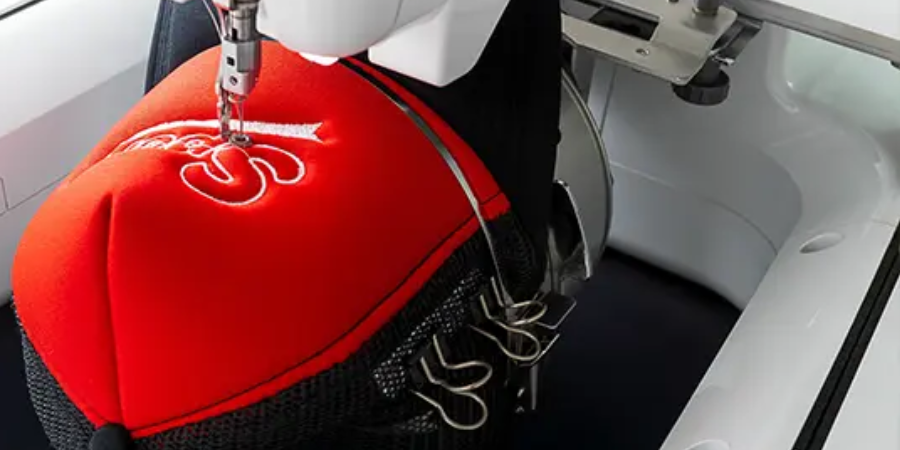Embroidery digitizing is an artwork that we convert into digital format through software. This enables machines to comprehend the needle’s path. To your knowledge, this process is not easy and automatic. The embroidery machines have their software installed in them. This allows us to take charge and perform functions while reading the instructions of digitized files. Furthermore, you can do any type of embroidery digitising on any kind of stuff through these machines.
However, lettering digitised caps are on trend these days. People have started taking digitised caps more seriously. Hence, if you are interested in knowing how it works, we’ll help you with it through our blog.
Below are some detailed steps for you on how to do embroidery digitizing lettering on caps.
Steps for Embroidery Digitizing Lettering on Caps
Step 1: Upload Your Lettering File on the Software
For cap digitizing, you need to upload your lettering file to the digitizing software. This will enable the machine to read the data. For example, if you have given the letters “Green Spin Green Win”. This will allow digitizing software to set the machine accordingly. However, you cannot set a machine in one go. You have to go through other steps as well.
Step 2: Setting the Design Size of the Embroidery
Next, you have to set the size of the embroidery design. This is done to make software analyse whether it is doable or not. That’s because not all designs can be digitised. However, in the case of lettering, it is not the case. Also, you have to make sure that you choose a few letters for digitisation rather than complete sentences.
Step 3: Select Stitching Type
Sometimes, selecting a stitch type becomes complex. However, if you fully research which type will go well with which stuff, you will easily decide. For your information, we have shared brief details of common stitching types below. Also, while selecting any type of stitch you have to consider its maximum stitch length.
Type 1: Straight Stich
Straight lines are repeated in this type of stitch to make the design. You can also adjust the thickness of the lines in this. Further, this stitch type can also be used to make curves.
Common Usage
· Best for Shading.
· Can do outlining very well.
· Good at doing detail work.
Type 2: Satin Stich
Satin stitch is best recommended for the lettering or any kind of text work. It has a longer thread and has a shiny appearance. Its maximum stitch length is 12.1mm. This will make your lettering work shine on caps.
Common Usage
· Used for lettering i.e., words and text.
· Good at bordering.
· To give a well-finished shiny look.
Type 3: Fill Stitch
It is known as tatami or ceding stitch as well. It is good for filling patterns. To give a woven look, it uses alternative lines. Its maximum stitch length is 4 mm.
Common Usage
· It is used to fill blank spaces.
· It gives a textured type of appeal.
· It is used for larger designs.
· It has more durable applications if compared to other types.
Step 4: Set Stitching Direction
Setting stitching direction is most crucial. Here you might require an expert’s consultation. In that case, you search for ‘experts of embroidery near me‘, and you can reach out to any expert for assistance. However, if you can still manage, then you are good to go. Because, in this step, there are high chances of design movement while doing embroidery. This movement occurs due to the usage of longer stitches, bulky stuff, and large plus tight threads. So, here, the digitiser has to be very alert as he needs to be conscious of the consequences of push and pull.
Step 5: Set and Select Your Thread Colours
It is the most interesting part of the digitizing process. After doing all the hard work, you need to set the threads with the colour of your choice. For example, if you are lettering caps for a birthday girl, then pink, golden, and white will be the safest option. So, it’s up to you which colour you want to show off your creative skills.
Step 6: Transfer the File to The Embroidery Machine
Lastly, you are required to transfer your file into the embroidery machine. After that, you will get the desired product. However, you will get the desired product only if you have done the digitizing work skillfully; otherwise, all your efforts will go in vain.
FAQs
Is digitizing embroidery software expensive?
Yes, it is expensive because of commercial usage. Also, its software needs multiple development resources and time.
How do we differentiate between embroidery and digitization?
It’s very simple; these are two different concepts merged for a single purpose, such as software through which we set up files to give embroidery machine instructions.
Is there any disadvantage of digitizing?
No, there is no disadvantage to digitizing except the risk of being hacked.
What should I charge for digitizing embroidery?
It depends on the design, whether it is complex or not. However, on average, you can charge between 10$ to 50$.
What are the most common errors we make while digitizing?
The most common digitizing errors include; inappropriate use of programming sequences and tools, using software in the wrong way, wrong selection of stitches, and setting mistakes.
What is the simple software for digitizing embroidery?
The most common and easiest software to use for digitizing embroidery is “Ricoma’s Chroma”.
Wrap Up!
Well, doing letter embroidery on caps is a fun and creative process. You can apply multiple ideas or search for some really good inspirations from the internet. The learning part is that you have to monitor and work on each step. To set up a wonderful digital file, you are supposed to be fully involved in it. There is no shortcut or skip option available. You need to concentrate and select the best as per your needs, appeal, and preference. Of course, digitizing needs experience, time and patience, but in the end, it’s a skill that you can master as well.
Happy Learning, Happy Lettering!

